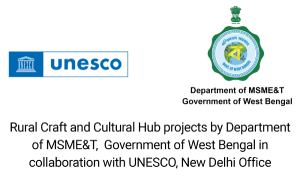Jhumur is a folk music form of the Chhotanagpur plateau covering several districts of West Bengal, Jharkhand and Odisha. Its origin dates back to the pre-Vaishnav Padabali period (15th century onwards). Jhumur songs and dances are an integral part of local community parabs (festivals), rituals (like Badna, Tusu, Karam Puja) and occasions like weddings and harvests. A unique feature of Jhumur is that it is an oral tradition. Jhumur songs are soulful manifestations of people’s everyday life, strife and tribulations. Sorrow, love and loss are weaved into every performance with utmost care. This common thread of emotion lies at the heart of Jhumur’s popularity. Jhumur has a vast repertoire. It crossed the confinements of villages and reached the cities by early 19th century. It occupied an important place in the entertainment scenario of 19th century Bengal. Kolkata witnessed many patrons of Jhumur at the time. Legendary singer-composers like Bhola Moira, Anthony Firangi, Gopal Ure, Bhavani Jhumurwali upheld this rich legacy which later on was continued by Angshuman Roy and this entire Kolkata Jhumur was part of film, Jalsa, and movies.
Within Jhumur tradition, there are specific melodies and rhythms that are unique to Jhumur. One of the special characteristics of Jhumur songs is its strong rhythmic component. The rhythmic cycles (talas) appear to be simple but are actually complex with a great deal of variety and subtlety.
Jhumur can be divided into three variants — Adi (old traditional), Maddhaya (Central/Middle era) and Adhunik (contemporary). Adi is the oldest style when it was primarily an oral tradition. The period after the time of Sri Sri Chaityanaya Deva (who brought in major societal reforms to abolish caste system) saw radical changes in people’s thoughts and this got reflected in Jhumur songs of the time. This is referred to as the middle era or Maddhaya. The period after Independence saw large-scale economic, social and political changes. These were reflected in the songs of those times. This is referred to as modern or Adhunik.
There are various kinds of Jhumur songs, usually named according to the season in which they are sung or the characteristics of the composition, dance or rhythmic pattern. But broadly, Jhumur is divided into three categories — Bhaduria Jhumur, Darbari Jhumur (court Jhumur) and contemporary Jhumur.
Total 2943 artists from Bankura, Purulia and South 24 Parganas districts are covered under the RCCH II initiative.



